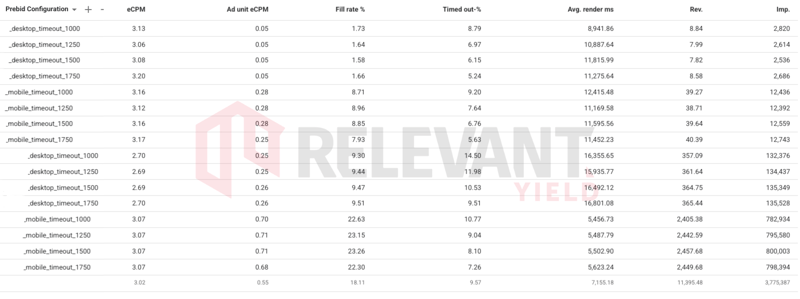
Timeouts can significantly impact publishers' digital ad revenues, particularly programmatic ad sales. In this blog post, we'll dive into how a careful definition of timeouts can help digital publishers increase ad revenue through a real-life multivariate test.
Timeouts in Programmatic Advertising
In programmatic advertising, a timeout refers to the window within which an ad call must receive a response. When a user loads a website, the site requests ad servers or SSP to display ads. If a response isn't received within a set time, the ad display may fail, or the site may attempt to load another ad. Thus, even a millisecond difference in a timeout duration can be significant for ad revenues.
Speed is critical in programmatic advertising. Timeouts help synchronise ad platforms in real-time auctions, minimising the delay between content selection and ad reception. Timeout settings determine how long the site waits for an ad to load before aborting the attempt. Too short a timeout can reduce ad displays and revenues, while too long can worsen user experience and slow down site performance.
Why Timeout Testing Matters
To find the optimal timeout length, we recommend publishers test different settings. For example, various time values can be tested side by side for different user segments and devices to understand their impact on ad revenues and site performance. This can help identify which timeout duration yields the best results in the tested environment.
Publishers should start with multivariate testing, testing different timeout values, and carefully analysing the collected data. Different timeout values can affect various metrics, including eCPM values, fill rate, and the number of timed-out bids.
A Real Timeout Test
In this example, we ran a controlled timeout test on a publisher's website and mobile app using four variants: 1000ms, 1250ms, 1500ms, and 1750ms, delivered to a small portion of traffic.
Why these numbers? Because they represent meaningful steps in bidder behaviour. Moving from 1000 to 1250ms often captures bids that cut it close but do not slow the page. Increasing to 1500 or 1750ms may unlock slower SSPs and mobile network responses. Anything beyond that risks delays that bring no incremental value. Testing all four lets us pinpoint where extra revenue outweighs added latency.
The setup was done through Relevant Yield’s HB Manager, which makes these experiments easy to deploy without engineering work.

Once live, HB Analytics allowed us to follow the essential KPIs in real time: revenue, eCPM, impressions, fill rate, timeout rate, etc.

What We Learn
The point is not to crown a universal best timeout. Every publisher environment behaves differently, from the device mix to the SSP lineup. What the test really proves is the importance of continuous experimentation in programmatic optimisation. The right timeout today might not be the right one six months from now as traffic patterns shift and SSP behaviour evolves.
Timeouts are only one piece of the optimisation puzzle. They sit next to price floors, ad quality settings, bidder mix, caching, and creative load. If your timeout is perfect but everything else is sloppy, you still leave money on the table. Testing gives you clarity. Analytics gives you proof.
Summary
Fine-tuning timeouts is a crucial part of a digital strategy that combines technical know-how and strategic planning, providing a significant advantage to digital publishers' financial success and user satisfaction.
Well-adjusted timeouts accelerate ad delivery and maximise ad revenues while maintaining a seamless user experience, which is crucial for strengthening publishers' brands and offering better experiences to site users. Active participation by publishers and awareness of the importance of timeout regulation, combined with continuous testing and minor adjustments, allow for an optimal balance between speed, efficiency, and user experience, thereby promoting the growth of programmatic ad revenues.
If you are a Relevant Yield user and want more information on timeouts or other testing-related issues, do not hesitate to contact your account manager. If you are not yet a Relevant Yield user and would like to learn more about the comprehensive tool designed for publishers and ad sales networks to enhance ad monetisation and increase revenues, feel free to submit a contact request here, and let's talk more.
